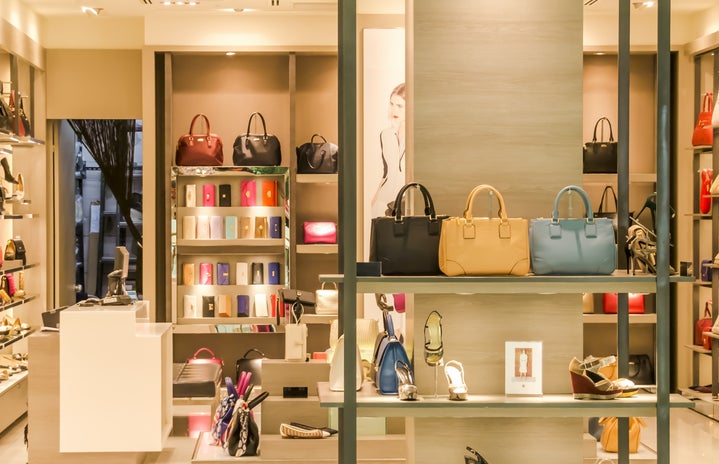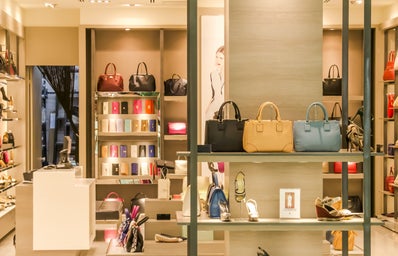As the death toll rises to over 1,100 from the collapsed textile factory in Bangladesh, clothing brands and retailers from around the world are coming together to prevent a tragedy like this from happening again. Most of the workers caught in the disaster were paid low wages and the building’s condition was extremely poor, and by signing the Bangladesh Fire and Building Safety Agreement, companies are pledging to put an end to these harsh labor environments.
The United Nation’s International Labor Organization (ILO) is urging many of our favorite retailers, like Gap, Wal-Mart and J.C. Penny to sign this agreement. H&M, Benetton, and Inditex, the parent company of Zara, have already agreed to the plan. According to the ILO, the agreement would require the hiring of 200 additional building inspectors within six months, provide workers with a training program to review skills, and a revision of safety standards for factories.
While this initiative is occurring on a higher level with the retailers, there are some steps you can take on your own to begin the push towards safer factory conditions. Whether you take action by signing a petition or you make an effort to shop smarter, you can help make companies and other fashionistas become aware of why a change needs to be made to improve inadequate clothing factories.
Sign a petition
Over 6,000 people have already signed a petition asking the companies who have not yet signed the Bangladesh Fire and Building Safety Agreement to do so. In a detailed and moving letter by the petition’s creator, Arif Ullah, a Bangladesh native, explains why this movement is so important on a worldwide basis. J.C. Penny and Gap are two major companies that are causing issues among advocates of the agreement because they have not signed yet, so this petition is aimed at these two stores, and others, in an attempt to help them understand why they should sign.
Shop Fair Trade
If you don’t want to eat food that comes from low quality conditions, then why would you want to buy clothes that come from low quality conditions? The fair trade movement has become increasingly popular when it comes to food, and with disasters like the Bangladesh factory collapse, people are beginning to look more closely at where and how their clothing is produced. One way to measure the quality of factory conditions is by the Higg Index, which was created by the Sustainable Apparel Coalition. The index measures aspects like how the products are created, transported, and how much energy is used in production. The goal of the coalition is to have an apparel and footwear industry that “produces no unnecessary environmental harm and has a positive impact on the people and communities associated with its activities.” By looking closely at every aspect from the working conditions to the materials used, they are moving towards creating a better, all around production of clothing.
Shop Ethically
There are many apps and online guides that are helpful in determining how ethical a company is in terms of their product production. Check out ShopEthica for a divers list of apps that can sort out what companies use minors in their production process, or help you find fair trade companies within a certain distance of where you are located, or retrieve information on a particular item before you actually buy it. Some apps can even help you aid specific causes to improve working conditions either through donations or product purchases. The website also has an online shopping section that only carries items that are made ethically. Each item is labeled as to how it is produced, whether it is created with sustainable material, it is handcrafted, or made in the United States. Ten Thousand Villages also sells products of a guaranteed production quality. They sell one of a kind handmade jewelry, home décor, textiles, kitchenware and more, made from artisans in Asia, Africa, Latin America and the Middle East. Those who make the products support their families by paying for food, education, healthcare and other necessities with the profit that they make from their work. But Ten Thousand Villages ensures that all of their partners work in a safe environment and that they receive adequate pay. The artisans are also encouraged to use sustainable resources and to make their products with an environmentally friendly process.
Shop Green
While organic shopping can sometimes be expensive, whether it’s for food or clothing, there are plenty of brands and designers that are dedicated to producing clothes and accessories that are good for the people buying the products for the environment. Find a new brand this summer to add some diversity to your wardrobe while also helping the movement towards sustainable fashion and better working conditions. Modavanti uses a labeling system that more and more companies are incorporating into their production process to identify how and where each item is made. Find a skirt made from recycled materials, a bag made from vegan materials, or a fun summer dress that was made in the USA. You can feel better about your clothes when you know exactly how they were made.
No matter what you choose to do in light of the recent tragedy in Bangladesh, it is important to be educated about where your clothes from. As tempting as it may be to buy that ten dollar shirt when you’re on a tight college budget, it might not be worth it if you’re looking at the situation of where it was made. Instead, use some of these tips to find companies that value the quality of the environment of where there clothes are made just as much as the fashion itself!

